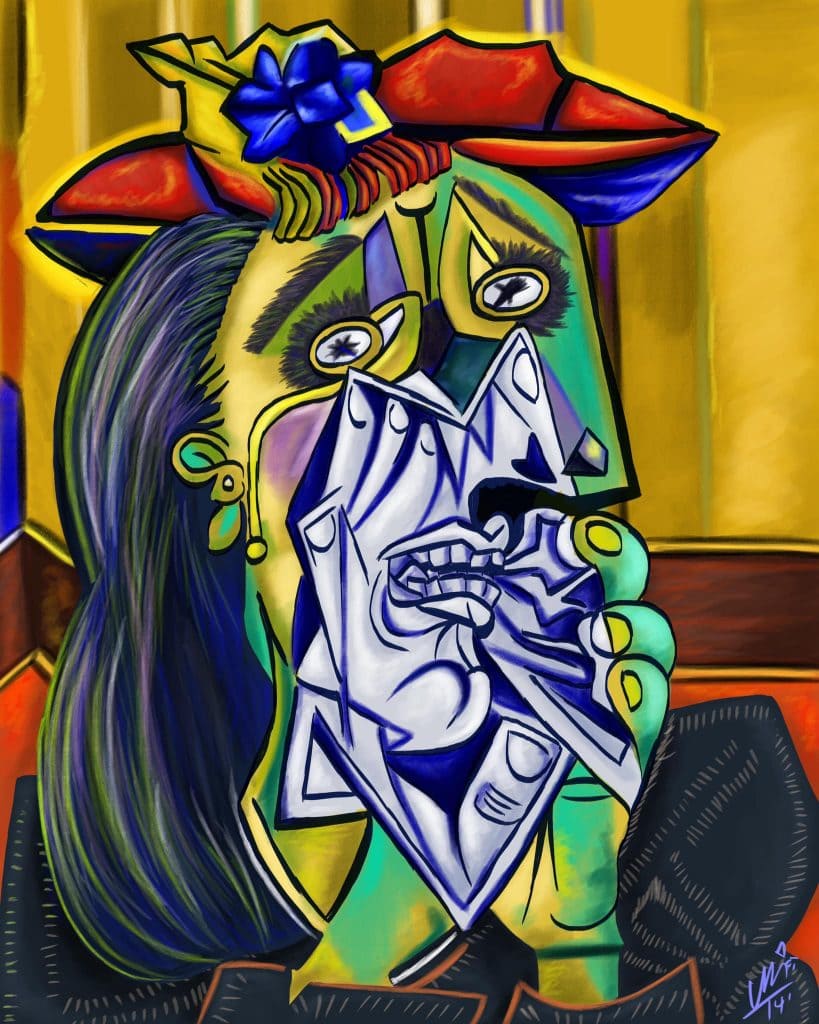The Cubist movement – a pioneering art revolution of the early 20th century – forever changed how we perceive painting and various art genres. If you’re curious about what Cubism is, the characteristics of the Cubist movement, or the famous Cubist works that shaped modern art, this article will guide you through the inspiring journey of this movement. From Paris to the world, Cubism is not just about paintings but a new way of seeing the world.
What is Cubism? Origins and Significance of the Cubist Movement
Cubism is a pioneering art movement that emerged in Paris in the early 20th century, initiated by Pablo Picasso and Georges Braque. The Cubist movement broke traditional painting rules by fragmenting forms into geometric shapes, creating multidimensional perspectives within a single work.
How Did the Cubist Movement Begin? Historical Context in Paris
The Cubist movement began around 1907-1908 in Montmartre, Paris, where Picasso and Braque collaborated closely. Picasso’s painting “Les Demoiselles d’Avignon” (1907) is considered the first proto-Cubist work, paving the way for the movement.
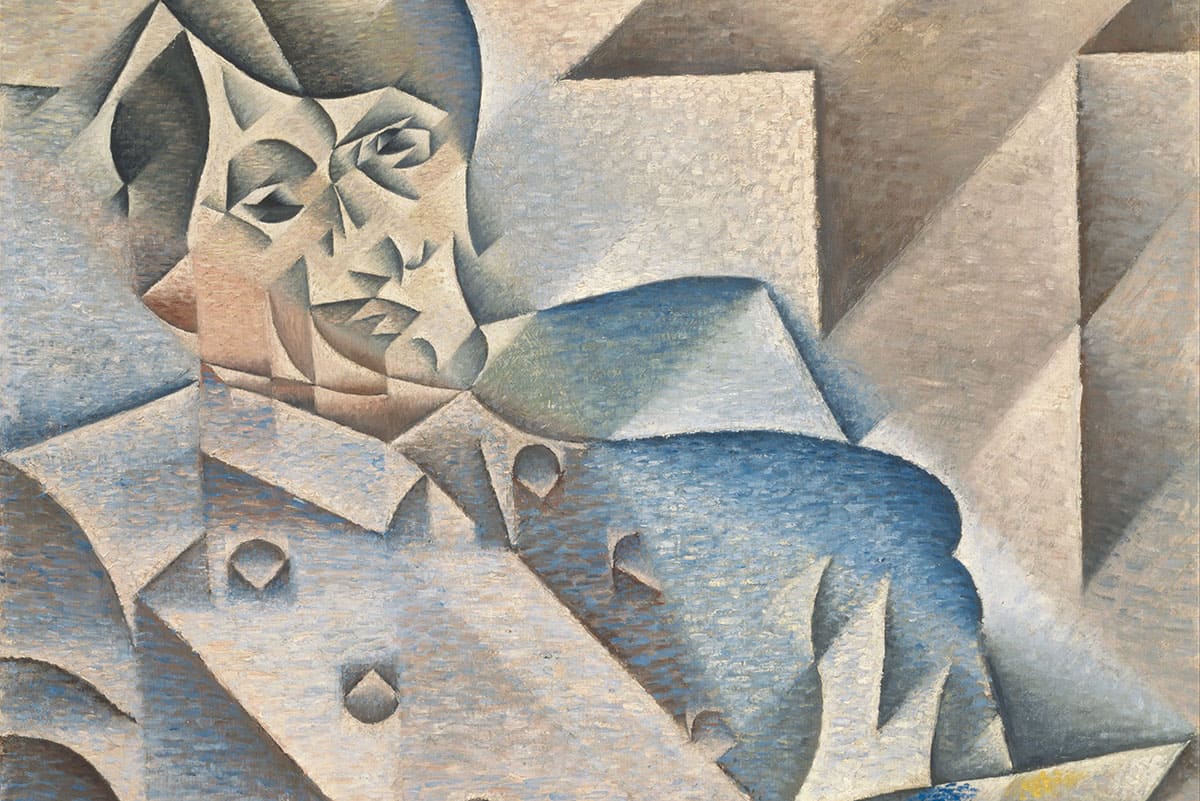
- Influence from Paul Cezanne: Cezanne’s approach to analyzing space and form inspired the Cubist movement, particularly in depicting multiple perspectives simultaneously.
- Non-European Art: African masks and Iberian sculptures at the Trocadero Museum strongly influenced Picasso, bringing angular and abstract elements.
- Development Period: From 1907 to around 1920, the Cubist movement underwent two main phases: Analytical (1907-1912) and Synthetic (1912-1920).
The Cubist movement not only transformed painting but also spread to sculpture, architecture, and design, shaping modern art.
History of the Cubist Movement: From Breakthrough Ideas to Global Legacy
The history of the Cubist movement is a story of innovation and challenge. From its early days in Paris, it spread widely, influencing many artists and other movements.
How Did the Cubist Movement Develop? Two Phases: Analytical and Synthetic
The Cubist movement is divided into two main phases, each with distinct characteristics:
- Analytical Cubism (1907-1912):
- Characteristics: Fragmenting objects and space into geometric shapes, often using monochromatic colors (brown, gray) to focus on structure.
- Examples: “The Poet” (1911, Picasso) and “Portrait of a Woman” (1910, Braque) demonstrate the fragmentation of forms, creating a three-dimensional effect on a flat surface.
- Goal: Analyzing objects from multiple angles, challenging the single-perspective approach of Renaissance painting.
- Synthetic Cubism (1912-1920):
- Characteristics: Incorporating collage and papier collé (pasted paper), using everyday materials like newspapers, wood, and fabric to reconstruct objects.
- Examples: “Glass and Bottle of Suze” (1912, Picasso) and “Still Life on a Table” (1913, Braque) integrate real materials, blurring the line between art and life.
- Goal: Reassembling fragmented elements into a new whole, creating a modern and relatable feel.
After World War I, the Cubist movement gradually gave way to movements like Surrealism and Futurism, but its influence persisted into the 1930s.
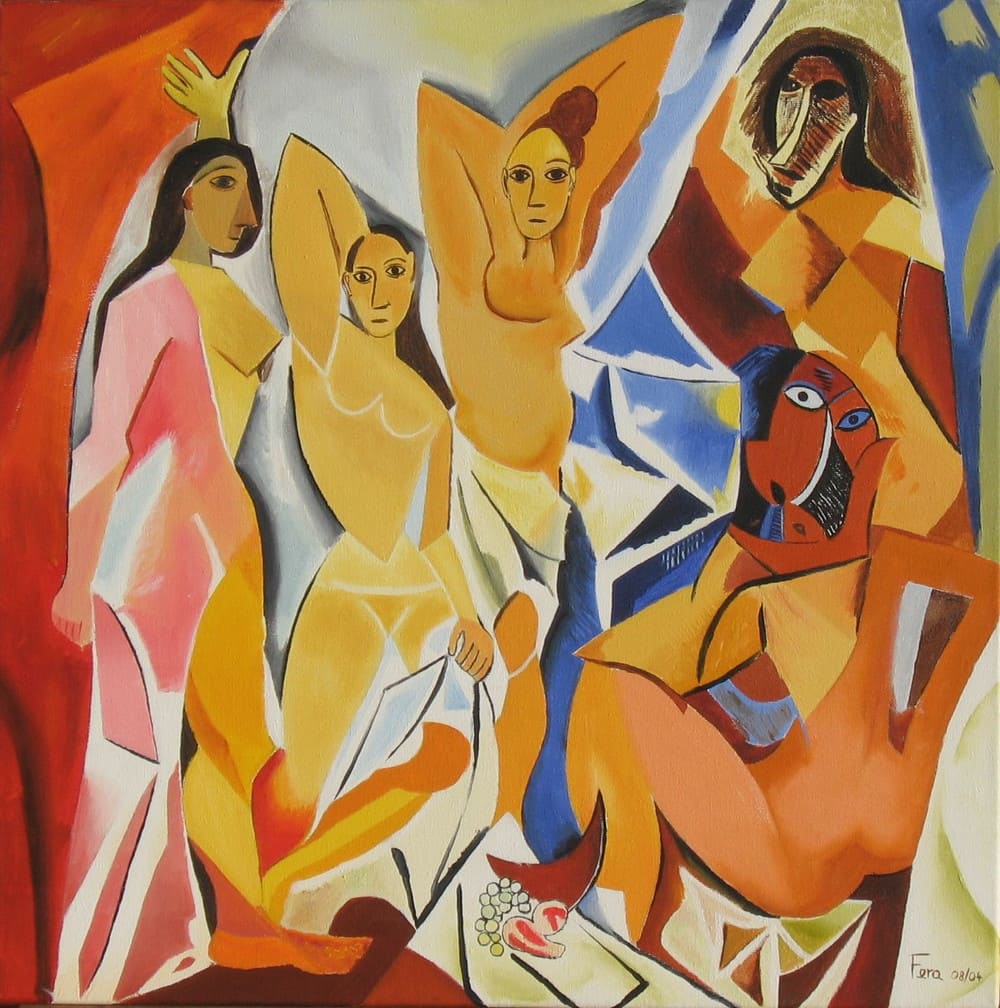
Impact of the Cubist Movement on Global Art
The Cubist movement is not limited to painting but has also inspired:
- Sculpture: Works by Alexander Archipenko utilize Cubist geometric forms.
- Architecture: The Bauhaus style draws inspiration from Cubist fragmentation and geometry.
- Modern Design: Contemporary furniture and graphic designs still bear the mark of Cubism.
Characteristics of the Cubist Movement: Elements Shaping a Revolutionary Style
The characteristics of the Cubist movement lie in breaking traditional rules, creating a new artistic language. These elements make it distinctive and easily recognizable.
What Are the Characteristics of the Cubist Movement? Key Artistic Elements
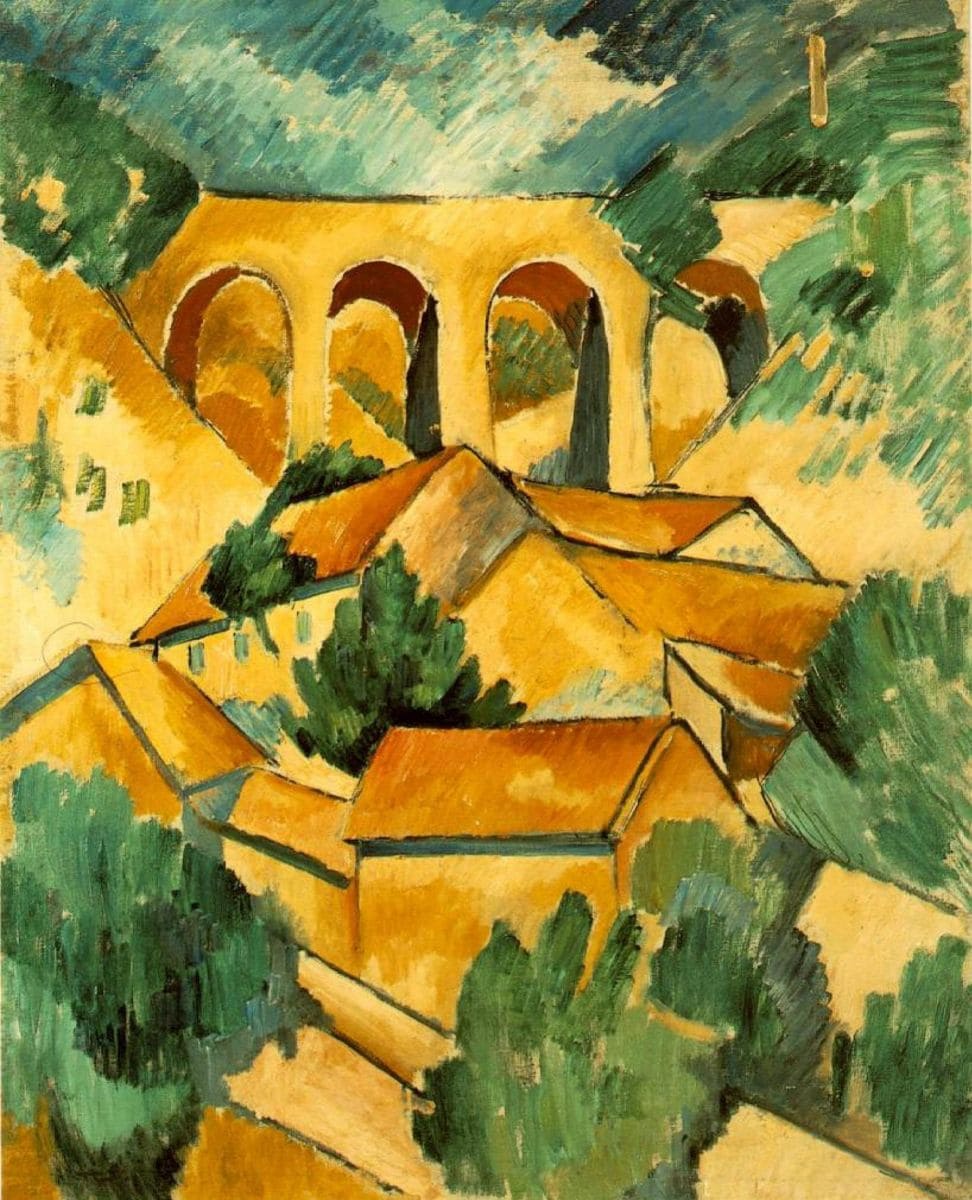
The Cubist movement is defined by five main characteristics:
- Fragmented Picture Plane:
- Instead of a smooth, flat surface, Cubist paintings fragment objects into geometric shapes, creating a sense of movement between planes.
- Example: The interlocking geometric shapes in “Guernica” (1937, Picasso) create a sense of unsettling depth.
- Multiple Perspectives:
- Instead of a fixed viewpoint, Cubist paintings depict multiple angles simultaneously, as if viewing an object from the front, side, and above.
- Example: “Portrait of a Woman” (1910, Braque) shows a face from multiple angles.
- Three-Dimensional Effect:
- Despite being on a two-dimensional surface, Cubist paintings create a three-dimensional effect through the overlapping of geometric shapes.
- Example: “Violin and Candlestick” (1910, Braque) reimagines a musical instrument with sculptural depth.
- Analysis and Synthesis:
- Analysis: Breaking down objects into smaller fragments (Analytical phase).
- Synthesis: Reassembling fragments using collage, incorporating everyday materials (Synthetic phase).
- Simultaneity:
- Cubist paintings capture multiple moments in time within a single frame, creating a sense of movement.
- Example: “The Weeping Woman” (1937, Picasso) combines various facial expressions in a single moment.
These characteristics make the Cubist movement a turning point, challenging how people perceive art.
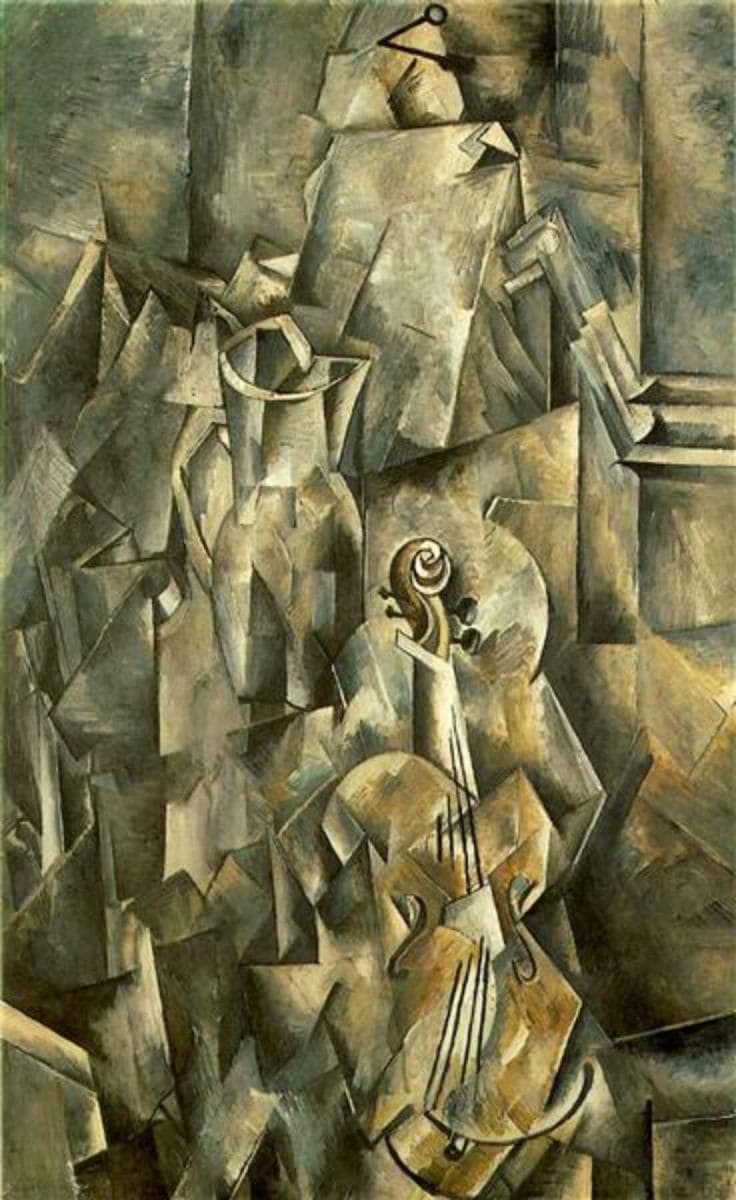
Artists of the Cubist Movement: The Names That Shaped the Revolution
The Cubist movement was not only defined by Picasso and Braque but also by many other artists who contributed to shaping the movement.
Who Are the Most Prominent Cubist Artists?
Below are five notable artists of the Cubist movement:
- Pablo Picasso (1881-1973):
- Role: Co-founder of the Cubist movement with Braque, laying the foundation with “Les Demoiselles d’Avignon” (1907).
- Style: Picasso’s works are sculptural, sharp, often incorporating political elements, such as “Guernica” (1937).
- Notable Works: “The Poet” (1911), “Glass and Bottle of Suze” (1912).
- Georges Braque (1882-1963):
- Role: Collaborated with Picasso during the Analytical phase, focusing on still life and musical instruments.
- Style: Ethereal, atmospheric, less colorful than Picasso, as seen in “Violin and Candlestick” (1910).
- Notable Works: “Fruit Dish” (1908-9), “Pitcher and Violin” (1909-10).
- Jean Metzinger (1883-1956):
- Role: Theorist and painter of Salon Cubism, co-author of “Du Cubisme” (1913).
- Style: Precise geometry, focusing on structure, as in “Soldier at a Game of Chess” (1914-5).
- Notable Works: “Le Goûter” (1911), “At the Cycle-Race Track” (1912).
- Albert Gleizes (1881-1953):
- Role: Developed Salon Cubism alongside Metzinger, emphasizing classical traditions.
- Style: Overlapping forms, dynamic compositions, as seen in “The Bathers” (1912).
- Notable Works: “Woman with Phlox” (1910), “Woman with Animals” (1914).
- Juan Gris (1887-1927):
- Role: Combined mathematics with vibrant colors, creating distinctive grid-like structures.
- Style: Refined, logical, as seen in “Woman with a Mandolin, after Corot” (1916).
- Notable Works: “Houses in Paris” (1911), “Portrait of Picasso” (1912).
These artists brought the Cubist movement from small Paris studios to the center of the global art world.
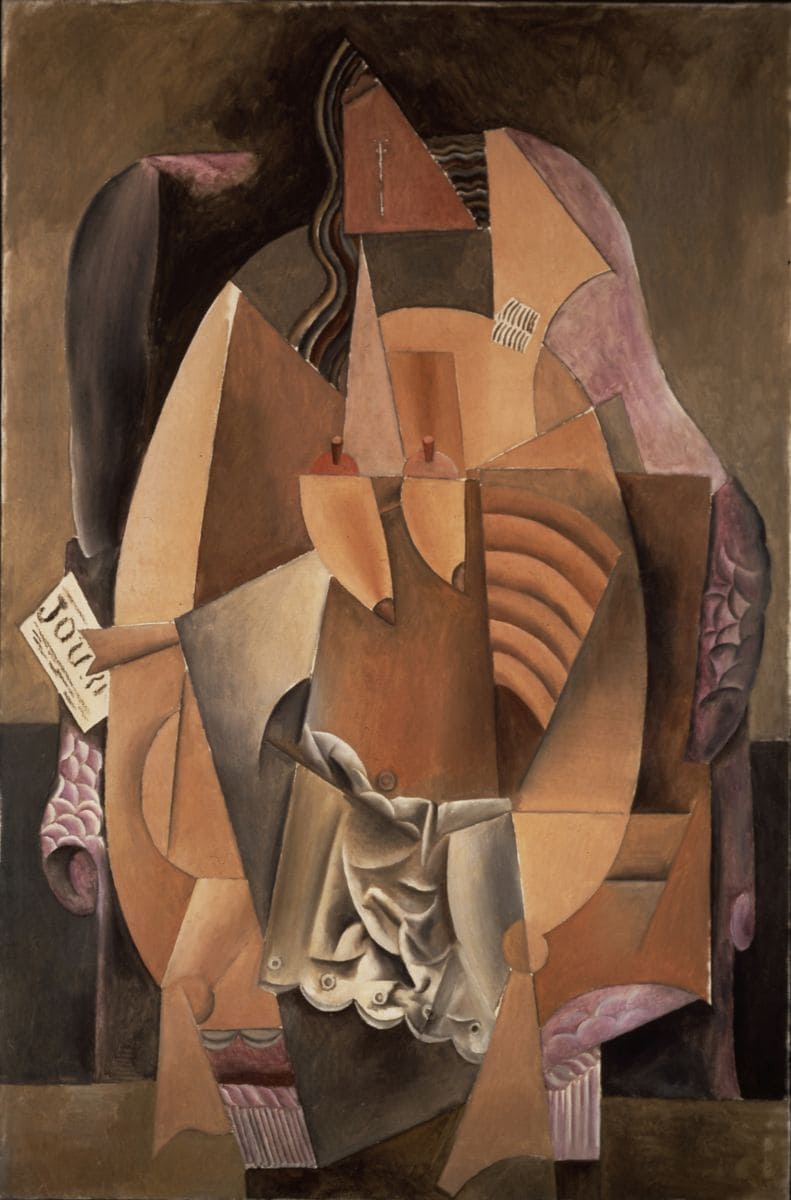
Works of the Cubist Movement: Masterpieces That Shaped Modern Art
Cubist works are not just paintings but declarations of innovation. Below are some of the most iconic masterpieces.
What Are the Most Famous Cubist Works?
- “Les Demoiselles d’Avignon” (1907, Pablo Picasso):
- Description: A proto-Cubist painting depicting five women with angular faces, influenced by African masks.
- Significance: Paved the way for the Cubist movement, breaking traditional perspectives.
- “Guernica” (1937, Pablo Picasso):
- Description: A large-scale work using Cubist forms to reflect the brutality of the Spanish Civil War.
- Significance: Blends politics and art, becoming a symbol of peace.
- “The Weeping Woman” (1937, Pablo Picasso):
- Description: A portrait of a crying woman, with fragmented planes expressing suffering.
- Significance: Showcases simultaneity and intense emotion.
- “Violin and Candlestick” (1910, Georges Braque):
- Description: An analytical still life, depicting a musical instrument from multiple angles.
- Significance: Evidence of the collaboration between Braque and Picasso in the early phase.
- “Soldier at a Game of Chess” (1914-5, Jean Metzinger):
- Description: Precise geometry, depicting a soldier playing chess with overlapping planes.
- Significance: Represents Salon Cubism, blending tradition and modernity.
These Cubist works are currently displayed in museums like MoMA (New York) and Kunstmuseum (Basel), attracting millions of art enthusiasts.
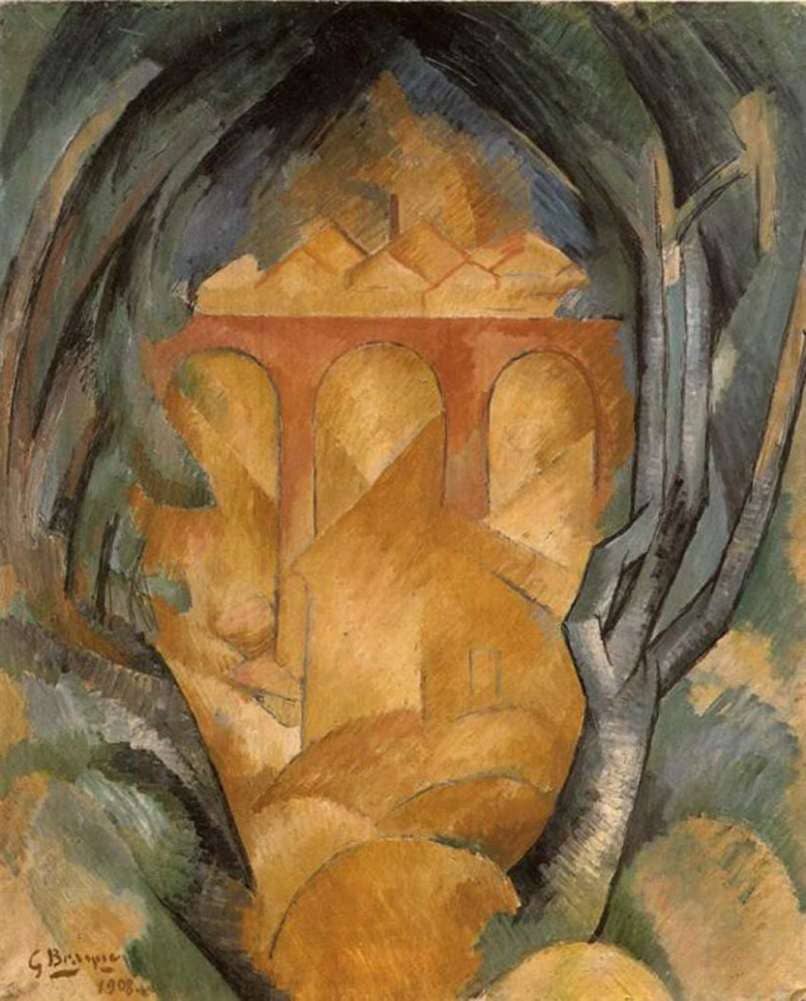
Impact of the Cubist Movement: Influence on Modern Art and Culture
The Cubist movement is not only an artistic movement but also a source of inspiration for many other fields.
How Did the Cubist Movement Influence Other Movements?
The Cubist movement inspired:
- Surrealism: Salvador Dali used Cubist forms in “Cubist Self-Portrait” (1923).
- Futurism: Italian artists like Umberto Boccioni applied Cubism’s dynamic qualities to motion.
- Abstract Art: Wassily Kandinsky and Piet Mondrian drew inspiration from Cubism’s fragmentation.
Additionally, the Cubist movement influenced literature (poetry by Guillaume Apollinaire) and music (works by Igor Stravinsky), paving the way for multidimensional creativity.
Legacy of the Cubist Movement in the 21st Century
Today, the Cubist movement remains an endless source of inspiration:
- Modern Design: Furniture and graphic designs utilize geometric shapes and asymmetry.
- Digital Art: Digital artists apply multiple perspectives in 3D design.
- Art Education: The Cubist movement is widely taught, helping students understand innovation.
If you love art, visit the MoMA Museum or Centre Pompidou to admire Cubist works. Which work from this movement do you find most impressive? Share your thoughts in the comments!

